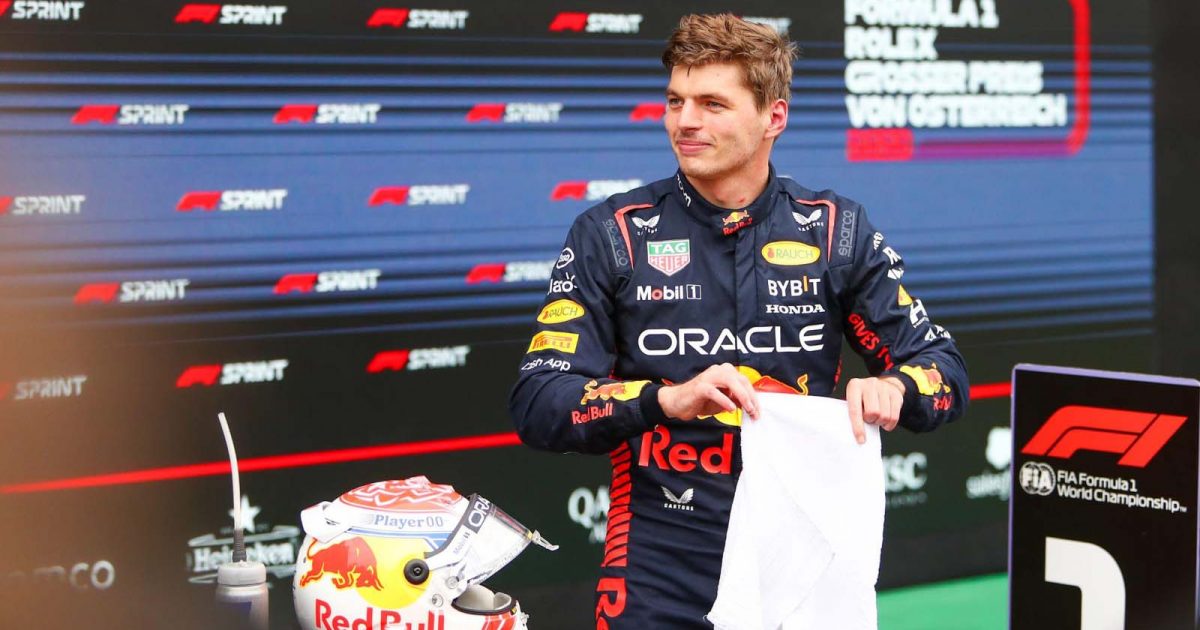
F1 SPRINT EXPLAINED: NEW RULES, FORMAT AND HOW IT DIFFERS FROM STANDARD F1 RACES
F1 Sprint weekends fundamentally alter the structure of how a Grand Prix takes place, as well as the points on offer to the drivers.
Big changes continue to be made to the format after it was first trialled in 2021 under the name Sprint Qualifying, but if you are new to the format or need a refresher on how it works, here is all you need to know about the F1 Sprint.
What is the F1 Sprint format?
Introduced in 2021 as a way of spicing up the Grand Prix weekend format and bringing meaningful action to each day of a race weekend, the F1 Sprint was brought in at three race weekends – upped to six in 2023 – with World Championship points on offer.
Three hours of practice are reduced to one, with the weekend structure fundamentally altered once again in 2024.
The Sprint Shootout sets the grid, before the F1 Sprint takes place over a one-third race distance, or around 100km.
What is an F1 Sprint weekend structure?
Instead of Fridays being reserved for two free practice sessions, F1 Sprint weekends see just one free practice session before the Sprint Shootout later on Friday.
In a change from 2023 rules, the 2024 season will see Saturdays have the Sprint take place as the first session in the day, before Grand Prix qualifying later on.
This was done to open up parc fermé regulations over the weekend, allowing the teams to make changes to their cars after the Sprint race and before qualifying if they choose to do so, as under the previous rules, their car setups were locked after only one hour of practice.
So for 2024, here is what a new typical F1 Sprint weekend looks like:
Friday
FP1 [60 minutes]
Sprint Shootout [44 minutes, SQ1/SQ2/SQ3 format]
Saturday
F1 Sprint [100km or one hour maximum]
Qualifying [60 minutes, Q1/Q2/Q3 format]
Sunday
Grand Prix [300km + one lap]
What is the Sprint Shootout?
Introduced in 2023, Sprint Shootout sets the grid for the F1 Sprint over a shortened version of the Formula 1 qualifying format, with the bottom five being eliminated at the end of each session.
Instead of Q1 being 18 minutes, Q2 being 15 minutes and Q3 being 12 minutes, these times are condensed, with seven-minute intervals between sessions.
Rather than a free tyre choice, compounds are mandated by session as well.
SQ1: 12 minutes [medium tyres mandatory]
SQ2: 10 minutes [medium tyres]
SQ3: 8 minutes [soft tyres]
The result of this session sets the grid for the F1 Sprint, with any grid penalties from qualifying on Friday applying to Sunday’s race and not Saturday’s Sprint.
PlanetF1.com recommends
F1 records: The drivers with the longest points-scoring streaks in F1 history
Explained: F1’s track limits rules and how the FIA enforces them
Do drivers have to pit during the F1 Sprint?
No, unlike in full dry races, pit stops are not mandatory for the drivers.
What points are on offer in F1 Sprint?
Points were initially only available to the top three finishers in F1 Sprint, but that was extended to the top eight finishers to offer more incentive to drivers – though they are reduced from the usual offering.
Drivers’ Championship points are as follows for F1 Sprints:
1st: 8 points
2nd: 7 points
3rd: 6 points
4th: 5 points
5th: 4 points
6th: 3 points
7th: 2 points
8th: 1 point
Where are the F1 Sprint weekends in the 2024 season?
The dates at which Sprints are taking place in 2024 are as follows:
April 19-21: Chinese GP, Shanghai
May 3-5: Miami GP, USA
June 28-30: Austrian GP, Spielberg
October 18-20: United States GP, Austin
November 1-3: Sao Paulo GP, Interlagos
November 29 – December 1: Qatar GP, Lusail
Read next: F1 social media: Which F1 drivers have the largest followings online?
2023-10-04T20:29:58Z dg43tfdfdgfd